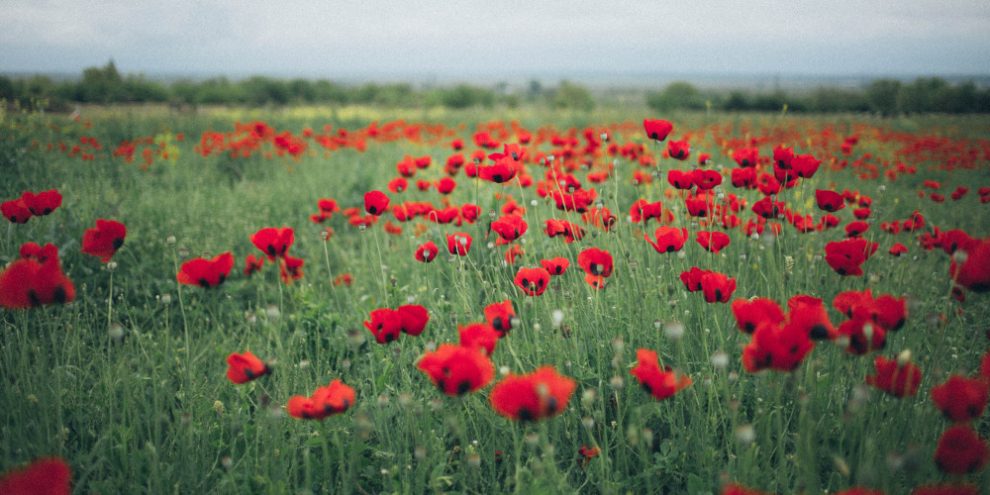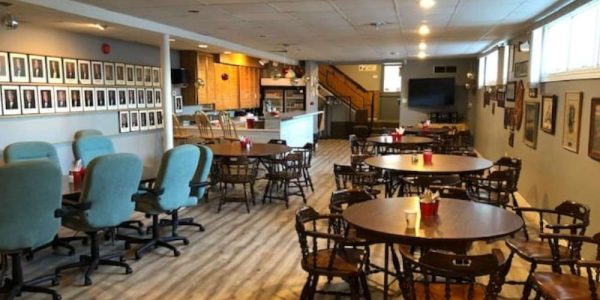
The Remembrance Day Poppy: Why We Wear Them And Where They Come From
We all know the Remembrance Day Poppy as the physical representation of Canadian bravery, sacrifice, and valour, but what you might not know is the origins of the flower and how it became this iconic symbol.
The poppy in wartime
World War I was the first global war fought with what can be considered modern weaponry. Swords and muskets were replaced with machine guns and bayonets, and cannons were replaced by the thundering boom of artillery.
For the first time in history, entire tracks of land were being completely decimated by the explosive power of war. Once the dust settled, the area between trenches (known as no man's land) was nothing but a graveyard of shell holes, shattered trees, and countless dead.
In such barren and ruined tracks of land, nothing living, plants or otherwise, could dare to survive.
The reason for this? The rubble scattered by constant shelling would cause the soil to become rich with lime, allowing the poppy (or popaver rhoeas) to thrive. Soldiers quickly began to notice otherwise empty stretches of land overflowing with poppies.
A key moment for the Remembrance Day Poppy
One of those soldiers was Lieutenant-Colonel John McCrae of Guelph, Ontario. On the day following the death of a fellow soldier, on a scrap of paper in May 1915, John McCrae would pen the poem we all know so well: In Flanders Fields.
In Flanders Fields the poppies blow
Between the crosses, row on row,
That mark our place; and in the sky
The larks, still bravely singing, fly
Scarce heard amid the guns below.
We are the Dead. Short days ago
We lived, felt dawn, saw sunset glow,
Loved and were loved, and now we lie
In Flanders fields.
Take up our quarrel with the foe:
To you from failing hands we throw
The torch; be yours to hold it high.
If ye break faith with us who die
We shall not sleep, though poppies grow
In Flanders fields.
The poppy's adoption in Canada
Originally conceived by Madame Anna Guerin of France, who was herself inspired by the poem written by John McCrae. Anna founded a charity that created poppies made of fabric in order to raise funds. These funds would help rebuild regions of France that saw the most devastating destruction in the war.
Anna went on to present her concept to France's allies, including The Royal Canadian Legion, and on July 6, 1921, the poppy was officially adopted.
How to wear Remembrance Day poppies
The poppy today is closely linked to Remembrance Day as a symbol of Canadian sacrifice and bravery. It is also worn at the funerals of veterans and events commemorating or honouring fallen soldiers. However, according to The Royal Canadian Legion, the poppy is appropriate to wear at any time of year, so long as it is worn with respect.
RELATED: Barrie releases a map of all the local streets named after resident veterans ...
The poppy should be worn on the left side, over the heart. Being a sacred symbol of Remembrance Day, it should not be affixed with any pin that obstructs the poppy. Check your local Legion for reusable black centre poppy pins.
When removed, the poppy should be stored appropriately, or it may be disposed of respectfully. If you ever see a poppy on the ground, you are encouraged to pick it up and brush it off. One place you can leave your poppy after Remembrance Day is at the base of a memorial or cenotaph (such as the one located in downtown Barrie).
Other Remembrance Day symbols
While poppies are the most well-known and abundant show of respect on Remembrance Day, there are a few other symbols you might be familiar with.
- Wreaths: Traditionally laid on graves and memorials in memory of the dead.
- Izzy Dolls: Small knitted dolls given to children in war-torn areas as a gift of hope. Named after Master Corporal Mark Isfield who died in Croatia in 1994.
- Tulips: A symbols of international friendship given to Canada by the Netherlands for our part in helping them regain their freedom in World War 2.
- Peace Cranes: A worldwide symbol of peace and non-violence.

Wreaths 
Izzy Dolls 
Tulips 
Peace Cranes
Now that you know the history of the poppy, what it means, how to wear it, and other remembrance day symbols, the next step is to head over to the Royal Canadian Legion's website and check out The Poppy Campaign.
Related: Local officials and veterans gather to launch Central Ontario Poppy Campaign ...
Through the distribution of the iconic poppy, donations to this fund support Canadian veterans directly.
For more information or to find out how you can get involved, click here.
Featured image: Elina Sazonova via pexels.com










